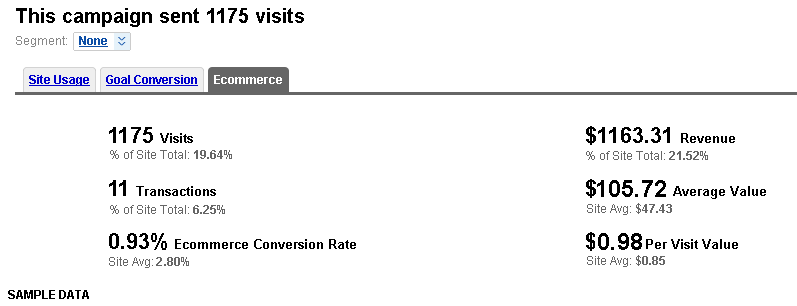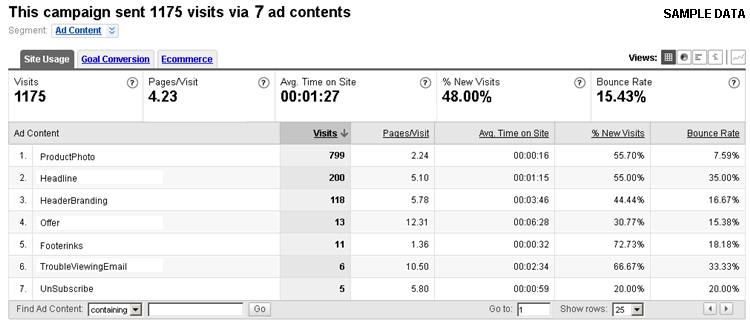November 26, 2007
CobWebs: 10 criteria for online fundraising
By Herschell Gordon Lewis
Excepting political, of course, a great many veteran fundraisers question the effectiveness of email and a monolithic Web site in competing for the fundraising dollar, pound, euro, yen, and pledge.
Shakespeare anticipated this reaction when he wrote, "The fault, Dear Brutus, is not in our stars, but in ourselves." Some of the accepted procedures for commercial online marketing fall flat when applied to eleemosynary online marketing (no, the terms "eleemosynary" and "marketing" aren't mutually-canceling).
The fundraiser who sequentially at10ds to 10 relatively simple criteria should find this newest -- and admittedly the most challenging -- medium responsive. If you've become disgusted with email as a lead generator or a resuscitator or even as a reminder, a suggestion: retest, with wording congruent to the Web mindset.
An online appeal has the benefit and the curse of fast acceptance/rejection. That's Step One. Holding at10tion and immediately converting at10tion to the first of these suggested criteria is an indication of fundraising professionalism.
Criterion no. 1: Rapport
Of all 10, this one is most crucial. Assumption of a relationship, real or invented, is the essential key to positive attention. That means starting the message with rapport-laden wording, whether in the subject line or the first sentence of text. It also means discarding trickiness, cleverness, and chest-thumping.
Criterion no. 2: Rationale
Saying to the message recipient, "I'm contacting you because you are who you are" adds octane, provided the first criterion has been established. The two are Siamese twins, tightly joined at the brain. Pretending you're getting the message instead of sending it is no great challenge. Ask: Why am I contacting this person? Is it because he or she gave us money before? Is it because the last contribution was long ago or because the demographic matches our best donors? Distilling the answers should result in a rationale.
Criterion no. 3: Heroism
We all deal with the truism that every nonprofit is competitive with every other nonprofit. The typical donor has a finite amount of money to contribute to all causes. So the library competes with the symphony orchestra, which competes with the hospital, which competes with the community foundation. Being able to tell a prospective or lapsed donor, "You can be a hero" -- in credible, digestible wording -- can jog that individual off the stump of apathy.
Criterion no. 4: Logic
"We need help" is half a century out of date. Everybody needs help, which automatically diminishes this ancient approach. Instead, the first three criteria should isolate our cause on a plateau above the phone calls from shadowy law enforcement sources and direct mail that claims worthiness without the rhetorical weaponry of rapport, rationale, or heroism. Projecting the concept of logic isn't wording that says to the recipient, "This matches you"; rather, it's wording that has the recipient saying to himself or herself, "This matches me."
Criterion no. 5: Urgency
Urgency is implicit, and it also should be explicit. What makes the timing tight? Why are we in a hurry, which means you should be in a hurry to participate? What emergency exists? Careful, now: Our rapport-buddy has to accept what we regard as urgent on identical grounds. Don't sink too deeply into the overly dramatic. Panic not only isn't a sales weapon, it's a turnoff, and the rapport-switch can too quickly snap to "off." Urgency, too, becomes controversial because it's at odds with a venerable fundraising method. Note the next criterion.
Criterion no. 6: No pledges
Pledges and immediacy are at the antipodes of online appeals. You're using the "Right now" medium, and your call should stay in sync with the medium. No one can object to testing the pledge-option, but that's what it should be -- a test rather than a given. Inherent mutual speed is a characteristic that doesn't extend from the Web to standard-class direct mail. It does have a cousin -- public service space ads and broadcast commercials ... but they aren't the topic under dissection.
Criterion no. 7: Recognition
Any and every professional fundraiser knows how to stroke a donor. That's nothing new. Inclusion of publicized recognition, often decked with ribbons on a separate enclosure in a direct mail appeal, should be mentioned early on and exploited later on. The nature of online fundraising makes us wary of unexplained defections. Where did we lose that person? Immediately, because we just didn't connect? Was it halfway through the pitch? At the end, was it because we didn't convince? The early mention of recognition is a glue. It might be a weak glue, but certainly that's better than no glue.
Criterion no. 8: Guilt
Guilt is one of the great motivators of our time, and properly mounted it outweighs any of the others in fundraising. The acknowledged others are: fear, greed, exclusivity, need for approval. There are also two "soft" motivators, convenience and pleasure. In commercial online marketing, greed is the runaway winner. Being able to generate a guilt-reaction might well be the height of fundraising art. It becomes "If we fail, you fail," blended with a non-threa10ing but clear "It's up to you."
Criterion no. 9: Satisfaction
Satisfaction links itself to guilt, rewarded. Don't assume the person to whom you're communicating will complete this link without you. Hammer it home: "You'll sleep the sleep of the just tonight" is the effect. Is that specific wording too strong, too obvious, too forceful? That becomes an executive creative decision. Although all fundraising is competitive with all other fundraising, uniqueness is a mandatory component, and whether you enter the arena with guns blazing or roses tendered is a matter of intended projected image.
Criterion no. 10: Verisimilitude
Of all the criteria, verisimilitude -- the appearance of truth and validity -- is the most difficult to impose because without exquisite tuning, explanation inadvertently (or deliberately) gives way to what the reader too easily can interpret as supplication. That's all it takes to wipe out both rapport and guilt.
An absolute rule for online fundraising is that we don't have to justify our existence to those we're contacting. The salesperson who says, "I'll be honest with you," is immediately suspect.
It boils down to this: We've heard it throughout our professional careers: Direct mail doesn't work. Space ads don't work. Broadcast doesn't work. Handouts don't work. And now, online doesn't work.
Opinion: Each one works for some others. So it isn't the medium that doesn't work. It's the use or misuse of the medium that doesn't work. The fault, Dear Brutus, is not in our stars, but in ourselves.



 One of the long unanswered questions about email marketing is whether you can combine video and email in a way that works.
One of the long unanswered questions about email marketing is whether you can combine video and email in a way that works. More tears were shed in 2007 over rendering problems than perhaps any other email marketing issue. Outlook 2007 broke some designer hearts and much ink has gone into suggesting ways to ensure your design works well wherever people look at it.
More tears were shed in 2007 over rendering problems than perhaps any other email marketing issue. Outlook 2007 broke some designer hearts and much ink has gone into suggesting ways to ensure your design works well wherever people look at it.![[Gmail screenshot: You are submitting information to an external page. Are you sure?]](http://www.campaignmonitor.com/blog/images/forms/WarningGmail.jpg)
![[Yahoo! Mail screenshot: Warning! You are about to send information to someone other than Yahoo! If you do not want anyone outside of Yahoo! to have this information, click Cancel now. Remember Yahoo! will NEVER ask you for your password in an unsolicited phone call or an unsolicited email. Please change your preferences if you do not want to see this message again.]](http://www.campaignmonitor.com/blog/images/forms/WarningYahoo.jpg)
![[Thunderbird screenshot: Thunderbird thinks this message might be an email scam.]](http://www.campaignmonitor.com/blog/images/forms/Thunderbird.jpg)
 As the holidays approach, chances are you will be launching several email marketing campaigns. Busy holiday marketing schedules heavily rely on email to connect with customers, promote holiday sales and offers, and to drive revenue. With the flurry of emails you’ll be sending out, analyzing your campaigns is critical to improving their effectiveness. Utilizing a robust web analytics package is a great way to scientifically determine what works best for your specific customer segments, and maybe more importantly, what doesn’t work. So, I decided to write a post that covers analyzing your email marketing campaigns by properly tagging your email links (for analysis in Google Analytics). Then you can break down and analyze your email creative at a granular level in your analytics reporting.
As the holidays approach, chances are you will be launching several email marketing campaigns. Busy holiday marketing schedules heavily rely on email to connect with customers, promote holiday sales and offers, and to drive revenue. With the flurry of emails you’ll be sending out, analyzing your campaigns is critical to improving their effectiveness. Utilizing a robust web analytics package is a great way to scientifically determine what works best for your specific customer segments, and maybe more importantly, what doesn’t work. So, I decided to write a post that covers analyzing your email marketing campaigns by properly tagging your email links (for analysis in Google Analytics). Then you can break down and analyze your email creative at a granular level in your analytics reporting.

